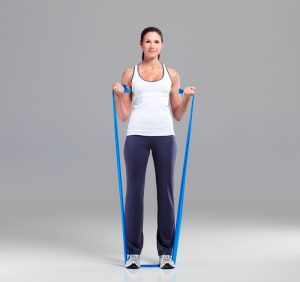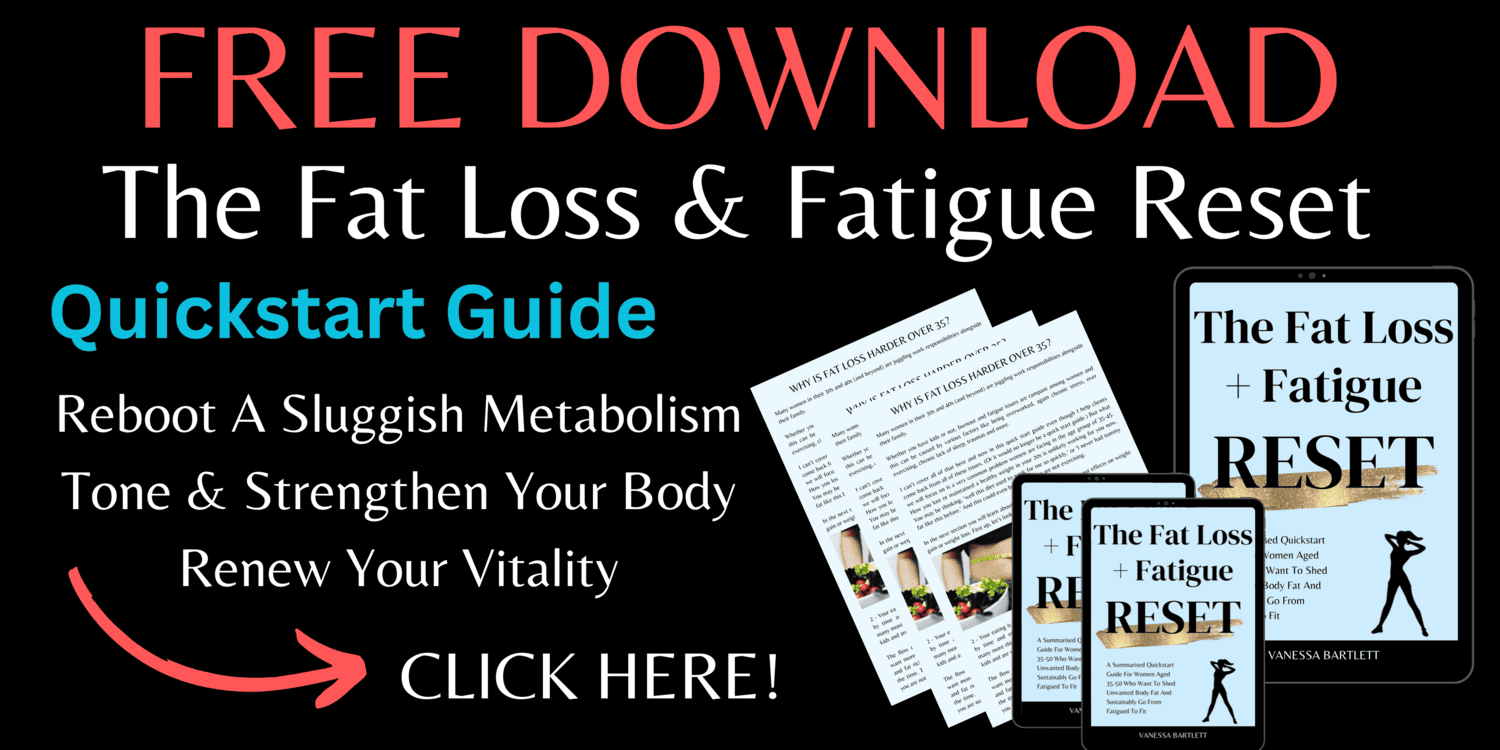Also known as latex bands, a TheraBand is a resistance band that’s ergonomically designed for physical therapy and light strength training exercises. Some athletes also use it to compliment sports-specific exercise and to assist with injury prevention, as well as people who are into low-impact strength training workouts.
I personally love resistance bands (and using minimal equipment anytime!) because they do not take up much room and can easily provide a good amount of challenge for your muscles for both stretching and stretching.
It’s been great to see so many of you commenting on my Youtube Channel about how you are travelling and using my routines as your fitness during work travel! Nice one for actually keeping up your exercise whilst on the move.
Carrying the resistance band in your bag is pretty convenient and takes up very little space. This means whether you are working long hours in the office, looking after your kids or travelling around the world, you can bring your band along!
Resistance bands are sold in different colors and resistance levels. You can use the resistance band regardless of your age and fitness levels. Here’s some benefits:
- Inexpensive – TheraBands are not costly and can be extremely effective in promoting a full recovery post-injury and for those who are wanting to maintain good health.
- Progressive – The bands come with different strength varieties from yellow (lightest resistance) to black (heaviest), but do check with the brand you purchase as to their colours and resistance levels.
- Effective – Weight-bearing exercises are essential for your health, specifically for muscle and bone development. Resistance bands provide muscle-building tension needed to make this happen.
- Preventative – TheraBand training is low-impact and forgiving to the joints. It increases muscle strength and protects joints to keep them pain-free.
- Safe – Resistance bands provide strength-training without having to drop a heavy weight and will help control your movement on both the contracting and relaxing phase for yournmuscles. This is what makes them excellent for working out even at home on your own.
- Sports specific – Bands offer resistance to all kinds of motions and can be particularly helpful for athletes.
- Versatile – Whether you’re a newbie or pro, resistance bands can help you and your body. With varying resistance levels — light, medium and heavy — you have the power to adjust the intensity of your resistance-band workouts further by giving it more or less slack. Additionally, you can use multiple bands at once to increase the intensity of your exercises when desired.
- Compatible with familiar exercises – Oftentimes, you can use common strength training moves with resistance bands. This means you won’t have to learn new, complicated routines. For example, resistance bands can be used in place of weights normally used for biceps curls or as intensity enhancer for push-ups.
- Fit for whole body exercises – Resistance bands can be used for a comprehensive, full-body workout that challenges virtually every major muscle group in your body.
Limitations
Like other exercise tools/materials, there are certain limitations to using TheraBands for your exercises. Some of these are:
- It is quite difficult to precisely measure the amount of resistance you are using as you do any of the resistance band exercises.
- The resistance bands may break or become worn through time, although you can powder some brands to prolong deterioration, and always purchase new ones every six months or so.
- Improper use of the TheraBand may result to further injury. TheraBand resistance bands may look like a simple exercise tool, however, they need to be used properly with caution to avoid getting injured during the process.
How Much Resistance Is Your Theraband Providing?
When using resistance bands, always check that you are using the proper resistance for that exercise. A band that’s too light of a resistance will make your exercise ineffective and most likely, pointless.
Likewise, one that is too heavy could make your exercise too intense or lead to fatigue, muscle pain by using the wrong muscles, or injury. This is why you need to check with your physical therapist for advice especially if you have had an injury.

5 Defining Arm Exercises
1.Overhead Extension
This exercise tones your shoulders and your triceps with proper and regular execution. Here’s how to do this exercise:
- Ensure you use a band that is long enough for one foot to secure on floor, while standing and holding both ends with both your hands
- Once you have stood on the band, hold both ends dropped behind your upper back
- Breathing out, extend both arms up into a full stretch straight above your head, then control down
- Repeat slowly for 15 reps
2.Chest Press
This exercise is beneficial not only to your biceps, but also to the muscles of your chest. Here are the steps for this exercise:
- Attach the center of your TheraBand in a doorjamb or to a solid object positioned at chest level.
- Do a standing position, while making sure your back is facing the attached part of the band.
- Grab one end of your band in each of your hands. Forming a 90-degree angle, slowly bend your arms at your elbows. Do this while keeping your fists at the front of your chest.
- Step a little forward until you can feel the resistance in the band.
- Position your legs to form a small lunge, with one leg leaning a bit forward.
- Stretch your hands forward in such a way that they are parallel with each other until fully extended. Slowly release your grip until your arms return in the starting position.
3.Rotator Cuff
This is great for strengthening the deeper shoulder, certainly a favourite of mine if shoulder pain has flared up at anytime too.
- Stand or sit comfortably
- Hold band shoulder distance apart, palms of hands up
- Tuck elbows into sides of your ribs and do not move from here
- Slowly rotate hands outwards keeping the same height between hands and elbows
- Bring band back in slowly
- Ensure you are feeling enough resistance in the band on the outward rotation
- Repeat 10 reps slowly
4.Shoulder Diagonals
This exercise requires making diagonal movements to shape your arms and strengthen your shoulders and upper back.
- Begin with a sitting or standing position with the band placed at shoulder height
- Strongly pull in opposite directions on a diagonal line, keeping shoulders level
- Hold your position for 3 seconds.
- Slowly transition to starting position.
- Repeat 10 to 20 reps, alternating sides
5.Biceps
It’s always nice to work those biceps and help define the front of your arms while helping to shape up without getting bulky (this is personal preference of course.)
- Stand or sit tall
- Secure one end of the band under one foot
- Curl hand holding the band up towards shoulder, contracting bicep muscles, control back down
- Ensure you have the correct resistance to feel this and do not let it drop on the way down
- If your band is long enough, stand both feet on the band and feel free to do both arms at once
- 15 reps each arm, up to three sets
Enjoy using your band and always keep your abs strong while doing any of the exercises!
Power To Your Core,
Vanessa Bartlett xx
Visit : vanessabhealth.com
- Holistic Online Personal Trainer, Specialist Exercise Trainer for Burnout & Fatigue Recovery, Pilates Instructor & Lifestyle Coach
- 2 x Top 15 Finalist Australian Women’s Business Awards
Join me on socials! @vanessabhealth





0 Comments